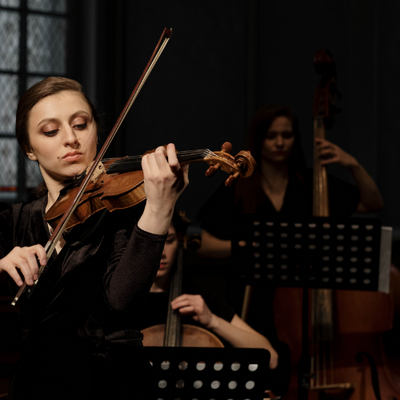 A proper bow hold is one of the most essential skills for string players, whether you're a budding violinist, an aspiring cellist, or a seasoned musician refining your technique. The way you grip your bow directly influences the quality of sound you produce and the control you have over your instrument. Developing a strong, yet flexible, bow hold can feel challenging, but with consistent practice and attention to detail, it’s entirely achievable.
A proper bow hold is one of the most essential skills for string players, whether you're a budding violinist, an aspiring cellist, or a seasoned musician refining your technique. The way you grip your bow directly influences the quality of sound you produce and the control you have over your instrument. Developing a strong, yet flexible, bow hold can feel challenging, but with consistent practice and attention to detail, it’s entirely achievable.
Understanding the Importance of the Bow Hold
The bow is not merely a tool—it is an extension of your musical voice. How you hold and manoeuvre the bow determines the tone, articulation, and dynamics of your playing. A well-executed bow hold facilitates smoother bowing techniques, reduces unnecessary tension, and enhances the fluidity of your movements across the strings. Conversely, a poorly constructed grip can restrict your range of expression and lead to physical discomfort.
Essential Tips for Improving Your Bow Hold

1. Start with Relaxation
Tension is the enemy of good technique. Before picking up the bow, shake out your hands to release any stiffness. When forming your grip, aim for a balance between firmness and flexibility. A rigid hold creates a harsh, mechanical sound, while an overly loose grip reduces precision and control.
2. Focus on Thumb Placement
The position of the thumb is a cornerstone of violin bow hold tips and cello bowing techniques. The thumb should rest lightly on the bow stick or the frog (depending on the instrument and your teacher's guidance), maintaining a slightly bent shape. This positioning supports the bow while keeping your hand from becoming overly rigid.
3. Position the Fingers with Intention
Each finger plays a distinct role in the bow hold. The index finger helps guide pressure, the middle fingers stabilise, and the pinky counterbalances the bow’s weight. Curving the fingers naturally, rather than flattening them, allows for greater control and flexibility.
4. Engage the Wrist and Arm
Improving bow grip is not solely about the hand; the entire arm works in harmony to create an effective bowing motion. Ensure that your wrist remains supple and responsive, moving fluidly with the bow stroke. This approach enhances tone quality and prevents jerky, uneven movements.
5. Practise Bow Exercises
Incorporate targeted exercises into your practice routine to strengthen your bow hold. For example, practising long, slow bows on open strings helps you focus on maintaining a consistent grip and pressure. Another popular exercise involves holding the bow upright (like a wand) and gently adjusting your fingers for balance, which builds familiarity with the correct positions.
6. Seek Feedback
For students, whether in private lessons or school orchestra settings, regular feedback from a teacher or conductor is invaluable. An experienced instructor can identify small adjustments in your bow hold that make a significant difference in your playing.
Troubleshooting Common Bow Hold Challenges
Many players encounter specific difficulties when perfecting their grip. For instance, excessive thumb tension is a frequent issue. To counteract this, experiment with exercises that focus on relaxing the thumb while maintaining the bow’s stability. Similarly, if the bow feels unbalanced in your hand, consider reviewing your finger placement and practising with a mirror to ensure alignment.
If you’re a music student or a teacher working with students, ensure that the bow itself is not contributing to the problem. Sometimes, issues with bow weight or balance can be resolved by using a bow suited to the player’s skill level and physical comfort.
Why Technique Matters

Mastering your bow hold does more than just improve your playing; it lays the groundwork for advanced techniques and musical expression. Whether you’re executing the delicate strokes of spiccato or drawing out rich, sustained tones, the grip you cultivate today will support every nuance of your performance.
For educators teaching groups of students, providing consistent reminders about bow hold can help young musicians develop this vital skill from an early stage. Schools that invest in high-quality bows and accessories for their music departments often notice a marked improvement in their students’ confidence and sound production.
Final Thoughts
Improving your bow hold is a journey, not a one-time fix. By paying close attention to your technique, addressing challenges as they arise, and practising mindfully, you can achieve greater control and sound on your instrument. With the right guidance and equipment, every musician has the potential to refine their bowing technique and unlock a world of musical possibilities. Explore our curated collection of bows designed for students, professionals, and educators alike.





















